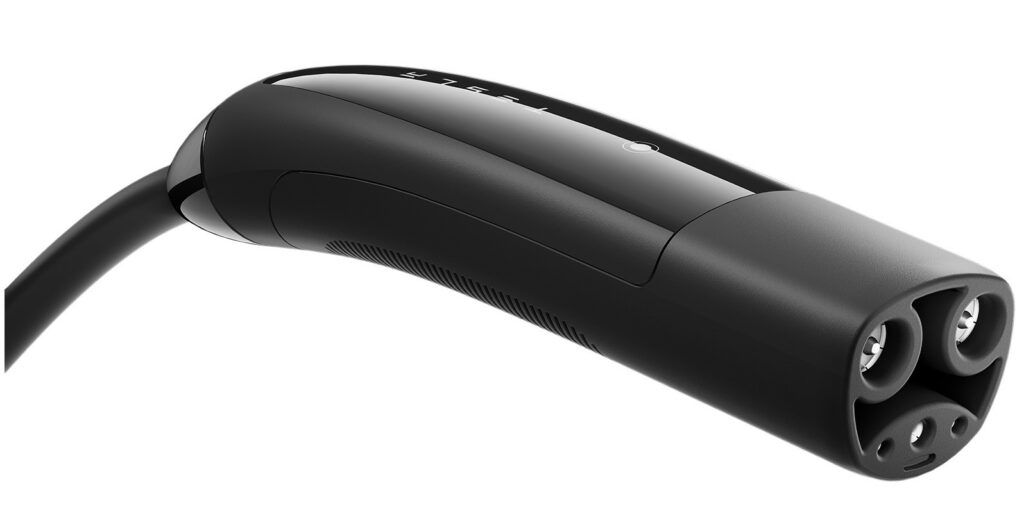
11-12 #Dream : LGD has unveiled a new stretchable display that is highly durable; SDC is reportedly considering expanding its QD-OLED production capacity; Foxconn is reportedly planning to greatly increase Apple iPhone production in India; etc.

Sony is reportedly working on at least 5 new phones set to release in 2023. The models comprise the Xperia 5 V, Xperia 1 V, Xperia PRO-II, Xperia 10 V, and Xperia ACE IV. The flagship models Xperia 1 V, Xperia 5 V, and the Xperia PRO-II are said to be powered by Qualcomm Snapdragon 8 Gen 2 SoC. The Xperia ACE IV is rumored to be the cost-effective model featuring a Snapdragon 4 Gen 1 SoC. (Android Central, Sumaho Digest, Phone Arena, Notebook Check)
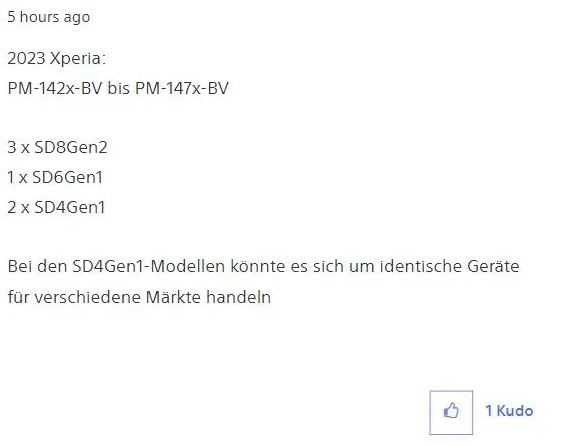
Foxconn is reportedly planning to greatly increase Apple iPhone production in India, quadrupling its workforce over the next 2 years. Faced with a severe hit to its revenues because of China’s COVID lockdown measures, Foxconn was already moving iPhone production to India. Both Apple and Foxconn are trying to mitigate the risks of dependency on China for global supply chains. They are also working to reduce the supply chain gap for iPhone manufacturing.(Neowin, Apple Insider, Reuters)
OPPO has announced partnership with Unity to offer better gaming performance and graphics fidelity on its smartphones. Unity is a known company that is best known for its Unity game engine. Furthermore, Oppo has already integrated its self developed ray tracing algorithm into the Unity game development engine, which helps create lights and shadows in real time in the game.(Gizmo China, IT Home, My Drivers)
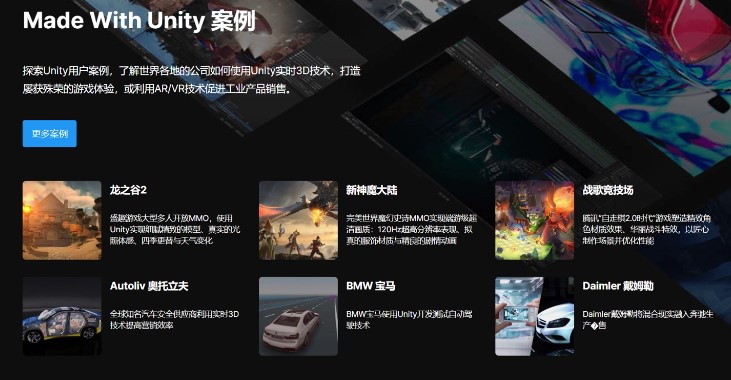

Fitbit and Google are reportedly working to develop a wearable for kids, codenamed Project Eleven. The device would be equipped with safety features for parents, including cellular and GPS connectivity to allow them to contact and locate their kids without the need for a phone. The wearable is scheduled to launch in 2024. (Digital Trends, Business Insider)
TF Securities analyst Ming-Chi Kuo believes that Goertek has stopped production of Apple’s AirPods Pro 2, leaving just one supplier producing the complex devices. After reporting back in 2019 that Goertek and Luxshare would be joint suppliers for the AirPods range, Kuo now says that Goertek has had to stop. The company has announced that it has suspended production on an audio device, though it has not confirmed which. Goertek’s suspension of production is more likely due to production issues rather than demand issues. To fill the production gap, Luxshare ICT, the first supplier, has expanded production and obtained all orders for AirPods Pro 2. Despite the changes, Kuo says that he estimates Apple will ship around 20M AirPods Pro 2 for 4Q22. (Apple Insider, Twitter)
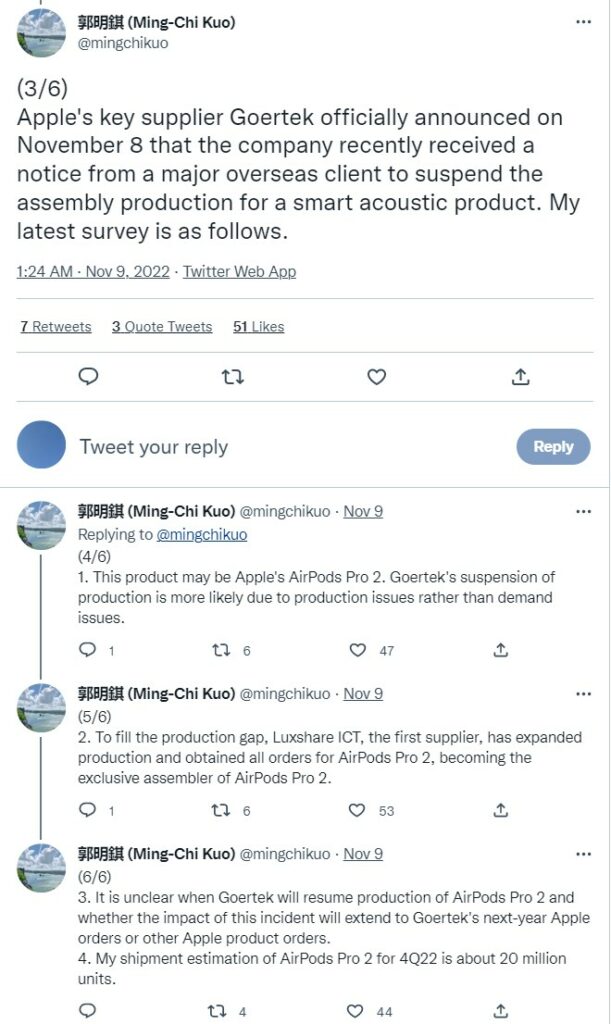

Meta has laid off more than 11,000 employees, representing 13% of its workforce. The layoff marks the first big job cuts at the social media giant since its inception in 2004. Mark Zuckerberg also announced that Meta will keep its hiring freeze in place until 1Q23.(Apple Insider, Facebook, Android Central)
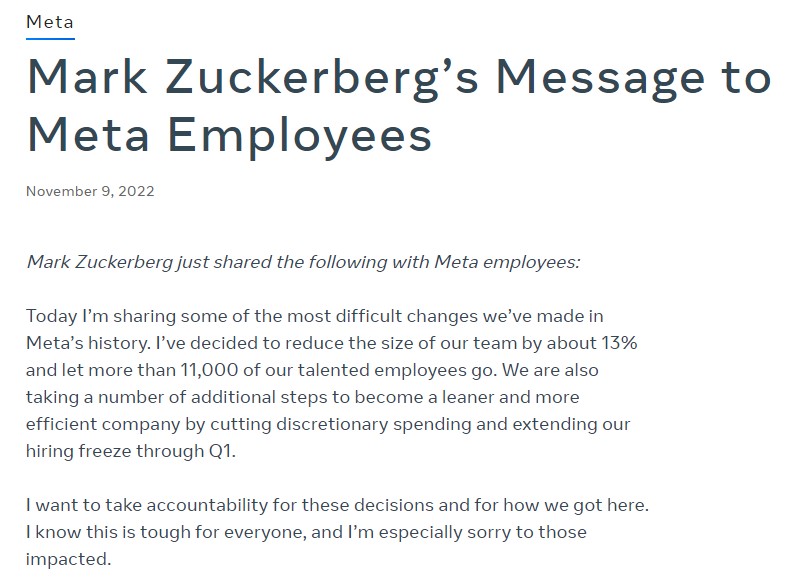

Renault Group and Google have announced an expanded partnership aimed at designing and delivering the digital architecture for the “Software Defined Vehicle” (SDV) and accelerating the group’s digitalization. The two partners will develop a set of onboard and offboard software components that are dedicated to the SDV and will grow synergies and use cases related to the group’s “Move to Cloud” strategy. The collaboration includes in-vehicle software to enable the “Software Defined Vehicle” Platform and cloud software to enable a Digital Twin.(Android Authority, Globe Newswire, Auto News)
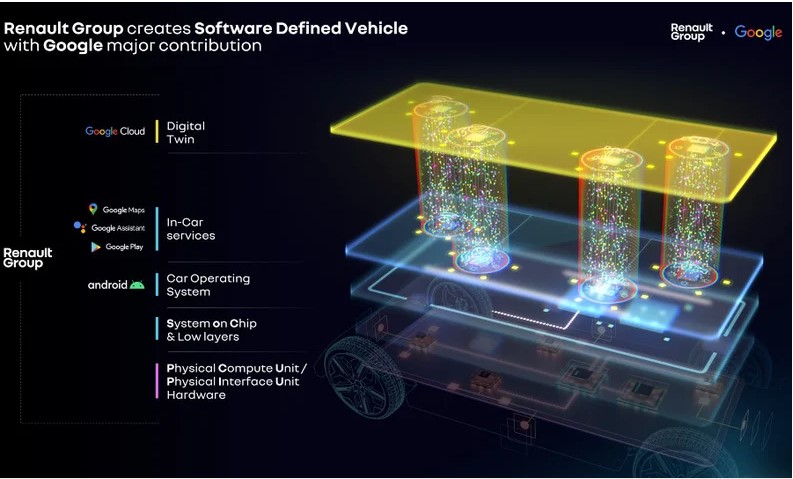

Apple is reportedly working on a project to simplify the “Hey Siri” trigger phrase to just “Siri”, according to Bloomberg’s Mark Gurman. It involves a “significant amount of AI training and underlying engineering work”. The reason for that is that a two-word trigger phrase like “Hey Siri” increases the likelihood of the software responding to a request. The change would make it easier to string together multiple commands one after another. Apple is also working to integrate Siri more deeply with third-party apps and services. All those changes could take some time to roll out, with Gurman noting the tweak to Siri’s wake phrase likely to come either in 2023 or 2024. (Engadget, Bloomberg)
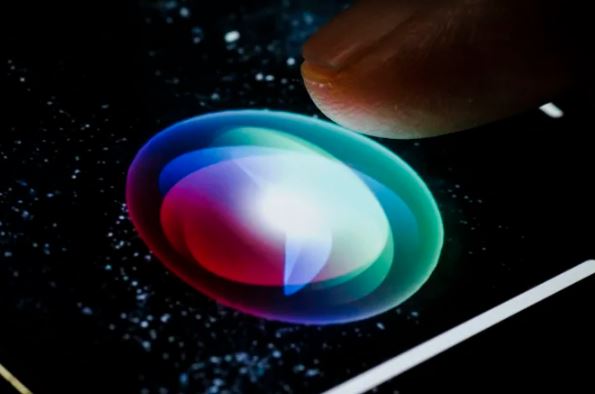

IBM has announced Osprey, which has the largest qubit count of any of its processors at 433 quantum bits. IBM has said it built on top of the 127-cubit Eagle’s architecture by keeping qubits on a single plane with the help of multi-level wiring. The company is scaling up its quantum computing efforts with the aim of building a system with 4000-plus qubits by 2025. Next up is a 1,121-cubit chip called Condor that IBM hopes to debut in 2023.(Engadget, IBM)
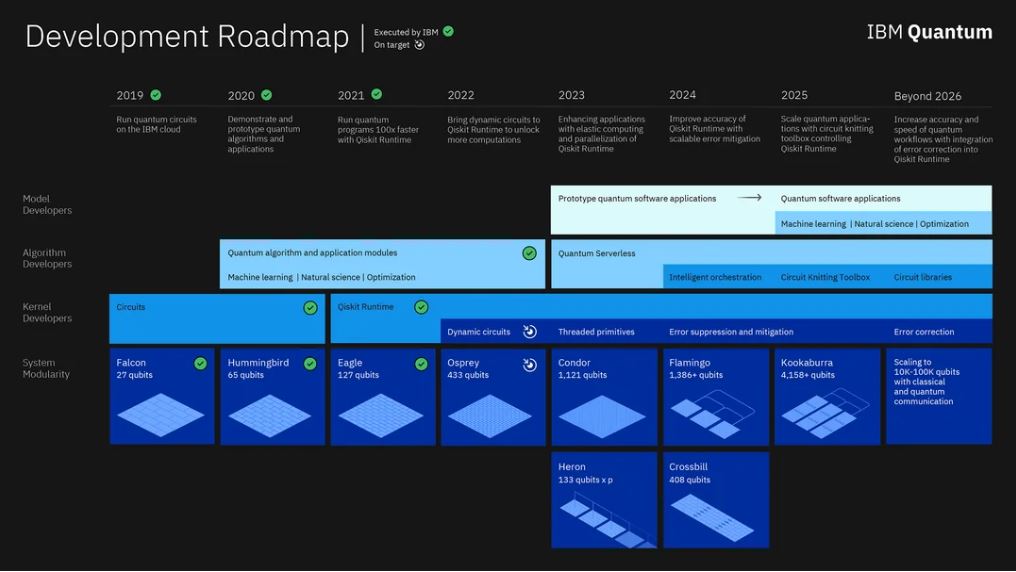
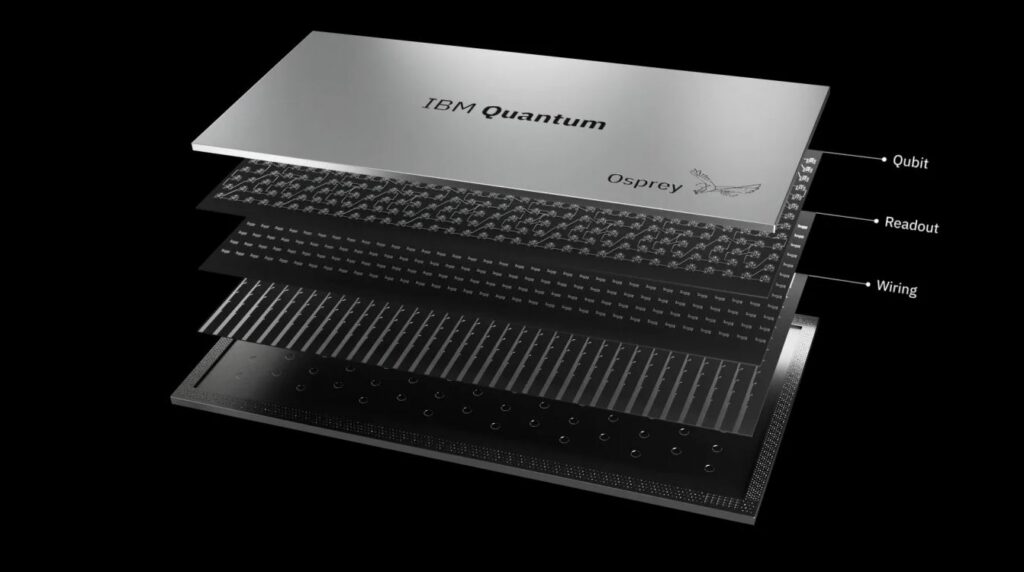
MediaTek has introduced two new chips designed to bring new capabilities to low-cost Chromebooks, namely Kompanio 520 and 528. The company says the first Chromebooks featuring the new processors should hit the streets in 1Q23. The new chips bring an “upgraded dual-core graphics engine”, support for H.265 video encoding as well as decoding, support for higher-resolution displays as well as external monitors, and efficiency improvements for longer battery life. They feature two premium Arm Cortex-A76 CPU cores with clock speeds up to 2GHz and 2.2GHz.(Android Central, Liliputing, MediaTek)
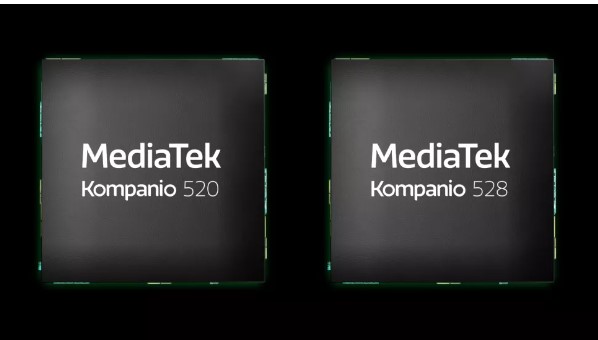
MediaTek has launched the Pentonic 1000, its latest flagship smart TV system-on-chip (SoC) designed for 4K 120Hz displays. Pentonic 1000 integrates Wi-Fi 6/6E support, MEMC for smoother video, a powerful AI processor, Dolby Vision IQ with Precision Detail, and 8-screen Intelligent View so users can watch or preview multiple streams of content at once. The chipset also supports the most advanced video codecs and global TV broadcast standards in a single platform.(Digital Trends, XDA-Developers, MediaTek)
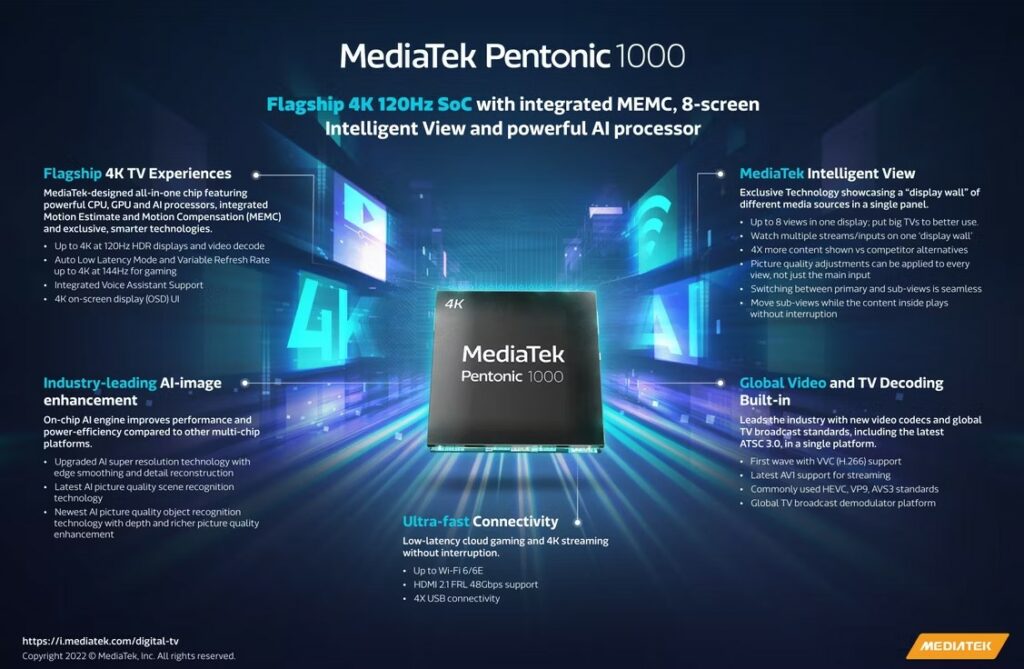
MediaTek has announced the new 4nm Dimensity 9200. It sports the new Cortex-X3 core, an upgrade over most 2022 Cortex-X2 phones. The 11-core Immortalis-G715 GPU will support hardware-based ray tracing while using 41% less power than the last generation. MediaTek also promises support for Wi-Fi 7, high-fidelity audio, and RGBW camera sensors. The MediaTek Dimensity 9200 has one Arm Cortex-X3 chip clocked at 3.05GHz, three Cortex-A715 cores (2.85GHz), and four Cortex-A510s (1.8GHz). The 9000 matched its successor’s number of cores and clock speeds, but the jump from Cortex-X2 to Cortex-X3 and A710 to A715 gives the 9200 a modest 12% single-core and 10% multi-core boost in performance.(MediaTek, SamMobile, Android Central, Android Authority, PR Newswire, Pocket-Lint)
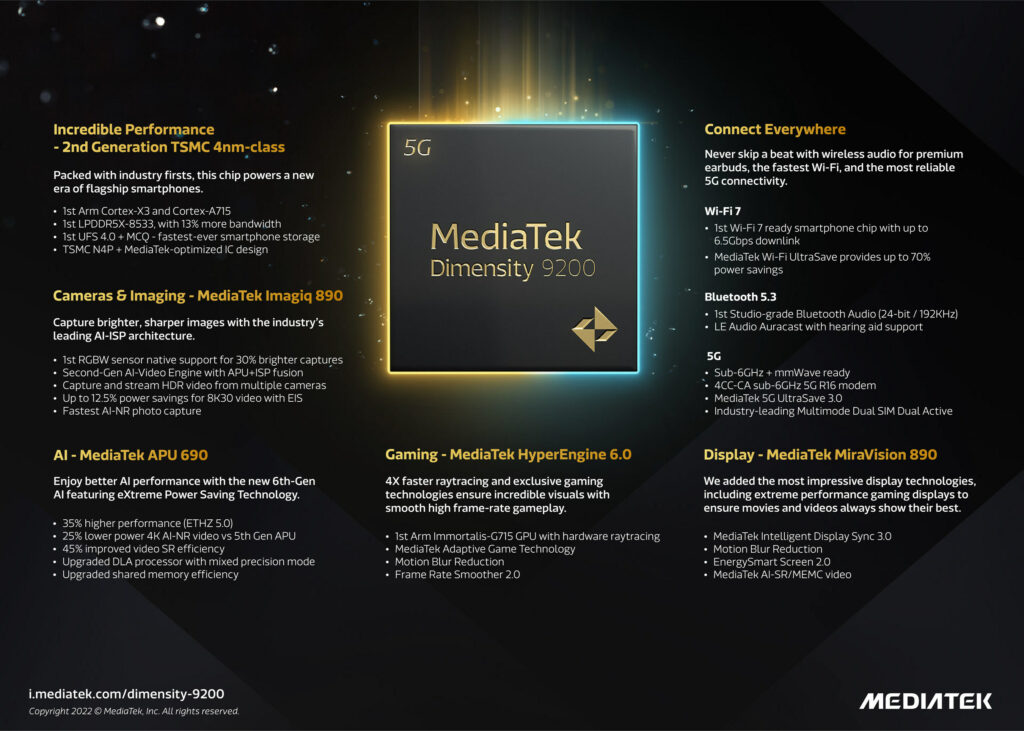
MediaTek T800 5G modem has also been launched, which promises a speed of up to 7.9Gbps. It is a part of the newly announced MediaTek Dimensity 9200 SoC, but the company says that it can also be used for industrial IoT, M2M, and always-connected PCs. It is a fast and efficient modem with support for sub-6GHz and mmWave brands on StandAlone (SA) and Non-StandAlone (NSA) networks.(Gizmo China, GSM Arena, IT Home)
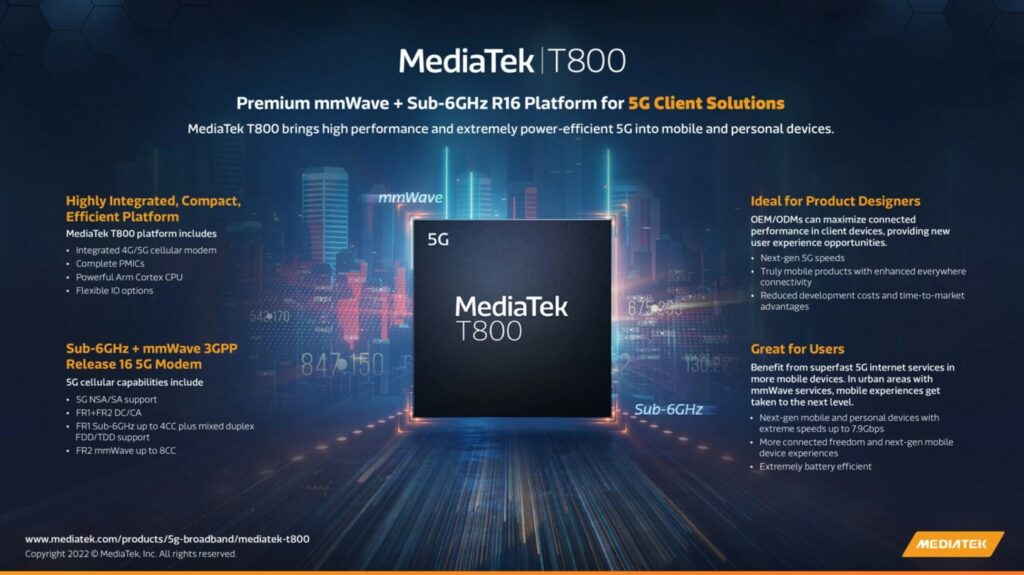
Taiwan Semiconductor Manufacturing Co (TSMC) is allegedly preparing another multibillion-dollar factory investment near Phoenix. The cost of the new plant will be approximately the same USD12B as for the first Arizona operation. The new plant would manufacture 3nm processors. TSMC has confirmed that it is adding a building that could potentially be used as a second processor fabrication site. However, the company says it has not made a final decision. (Neowin, Apple Insider, WSJ, Reuters)
vivo has unveiled a new chip that will be paired with MediaTek Dimensity 9200 processor for artificial intelligence (AI) enhancement. The new ISP (Image Signal Processor) by vivo is third-gen, following in the footsteps of vivo V1 and vivo V1+. This chip comes with unparalleled computing power capacity, power density, and data density. There is a dedicated SRAM (Static RAM) cache unit that can reduce maximum power consumption by over 99% and the power efficiency ratio to 200%, compared to classic DDRs with external memory design.(Gizmo China, GSM Arena, Weibo)
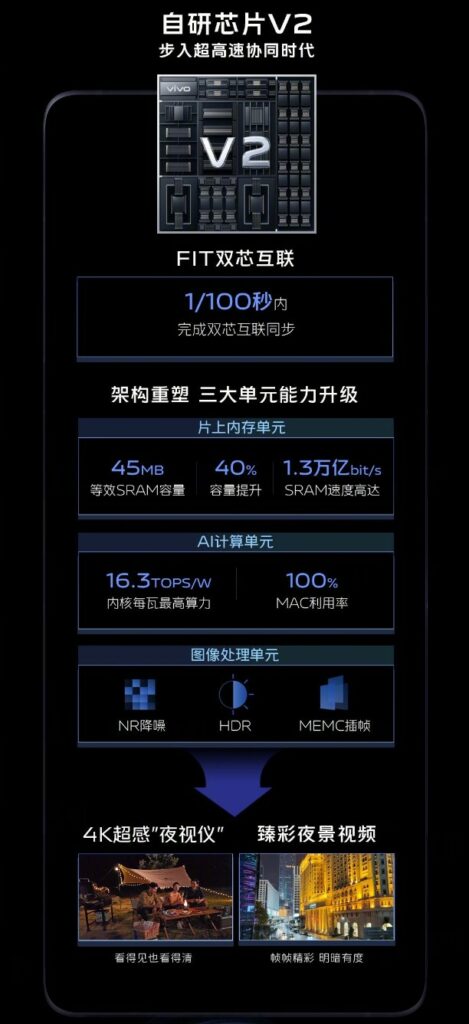
According to the CEO Peter Wennink, ASML would not change its 2030 forecasts much if Chinese chipmakers are unable to expand their capacity beyond current levels. ASML has upgraded its long term forecasts for 2025 and 2030, saying it expects demand for its products to be strong in the coming decade. It expects sales to grow to EUR44-60B euros in 2030, from EUR18.6B euros in 2021. The company plans to increase annual capacity to 90 EUV and 600 deep UV systems (2025-2026), while increasing high-NA EUV capacity to 20 systems (2027-2028). The company plans to adjust capabilities to meet future needs and prepare for cyclicality while sharing risks and rewards equitably with all stakeholders.(My Drivers, Yahoo, Reuters, ASML)
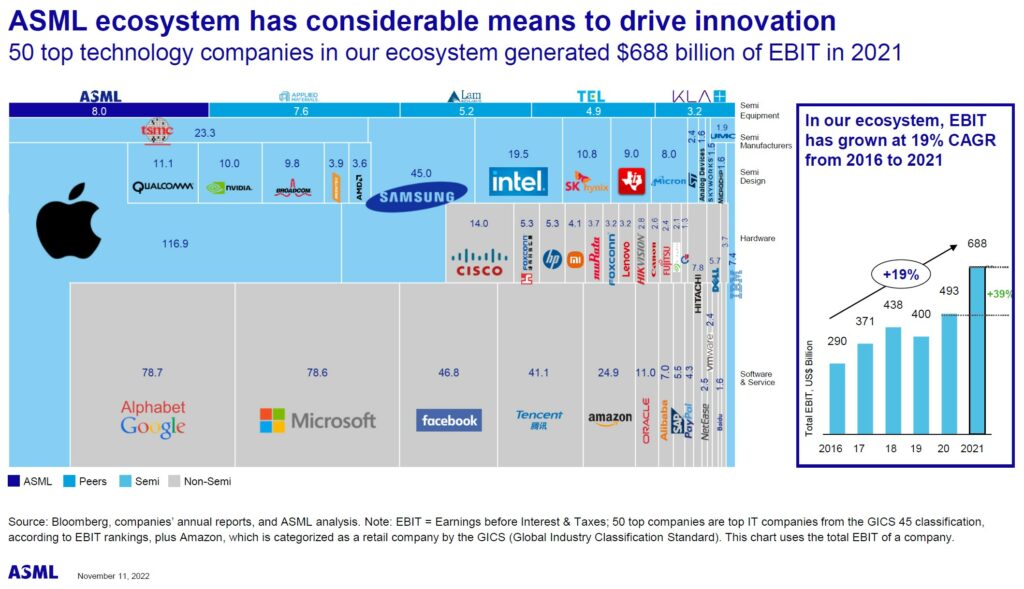
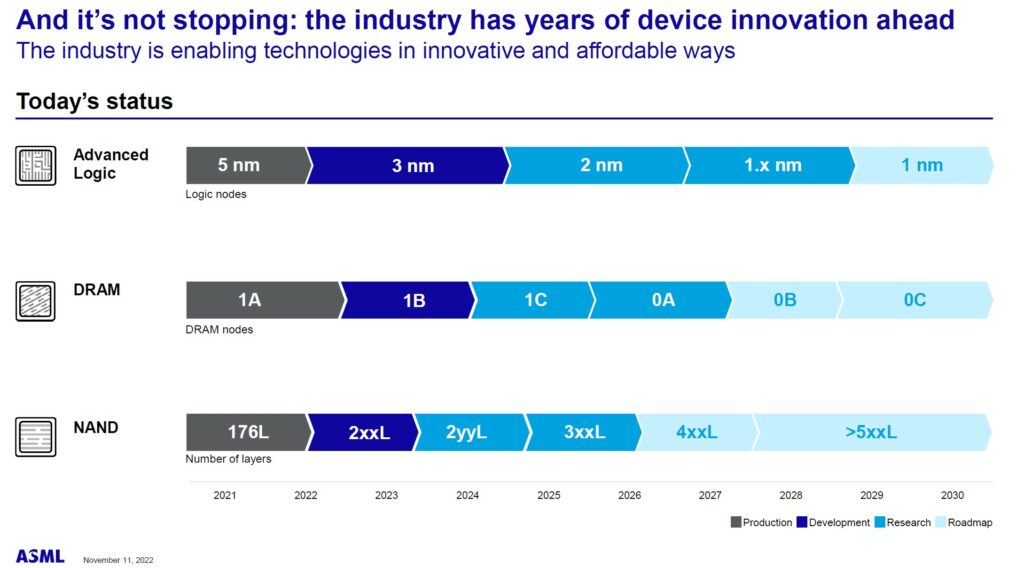
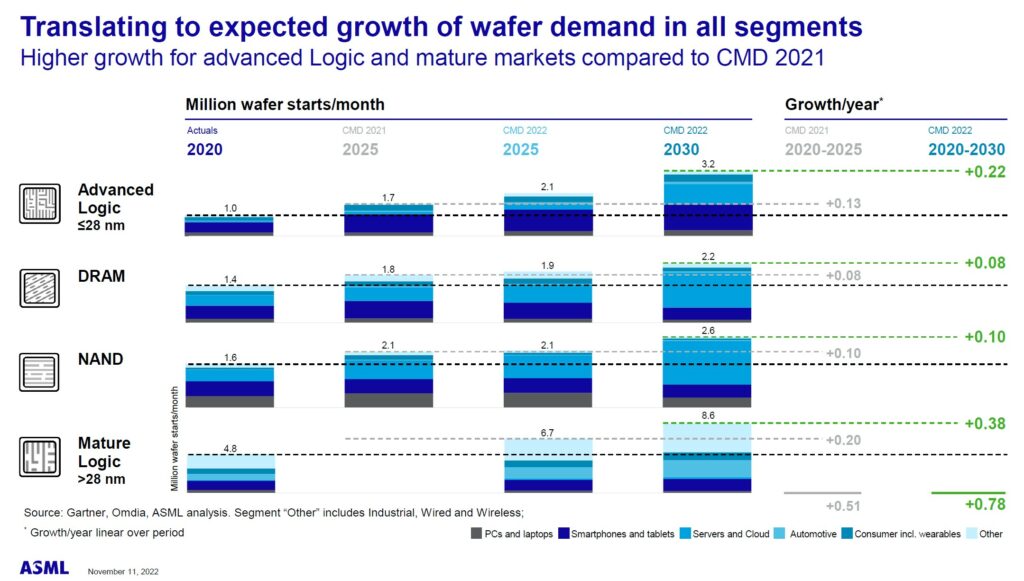
8 major Japanese tech firms and car makers, including Kioxia, NEC, NTT, SoftBank, Sony and Toyota, are teaming up in a consortium to launch an advanced chip maker. Rapidus aims to develop and mass-produce the next generation of logic semiconductors by 2027. The Japanese government will back Rapidus with JPY70B (USD500M), joining the eight tech corporations to reduce its dependency on chip production in other countries like Taiwan. According to Japan’s industry ministry, each participating company will invest approximately JPY1B (USD7M) in Rapidus, with MUFG Bank injecting JPY300M. IBM is reportedly partnering with Rapidus, which will have to get a license from IBM to manufacture sub-2nm chip technology in Japan. (TechCrunch, My Drivers, CNBC, Kyodo News, The Register, Asia Nikkei)
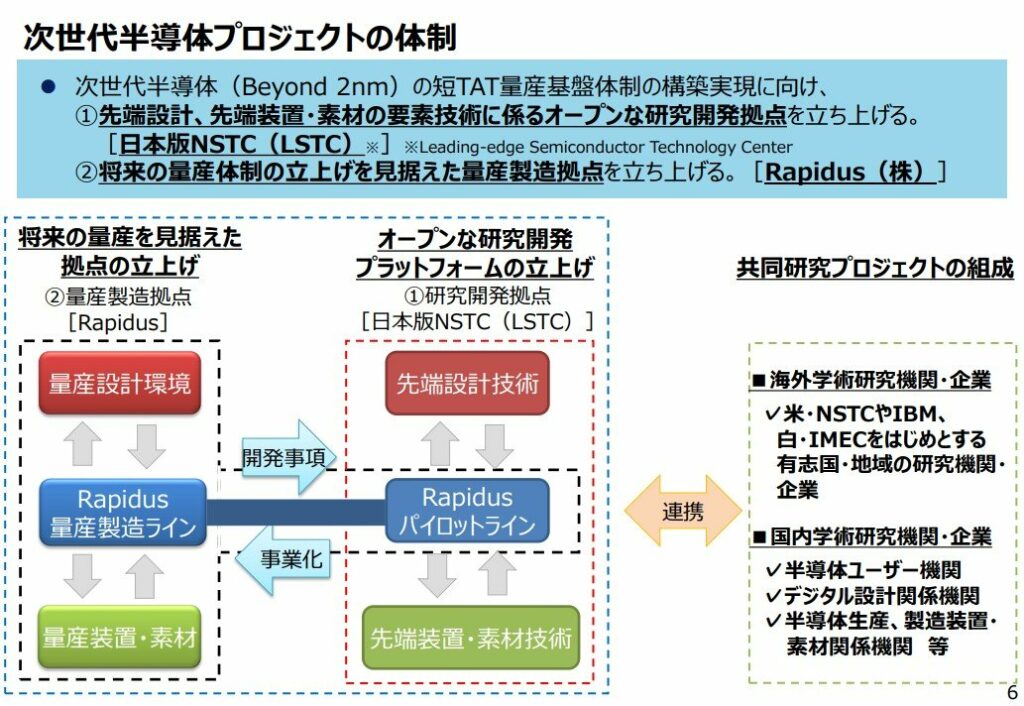
Huawei has denied the rumor that the company is launching new Kirin chips in 2023. Due to US sanctions, Huawei has been restricted from using certain technologies and doing business with some entities and as a result, the company’s in-house Kirin SoC’s development and production came to a halt. (My Drivers, GSM Arena, Weibo)

Qualcomm is allegedly working on a 12-core laptop processor and launching in 2024. Going by the code name “Hamoa”, this Qualcomm chip is reported to have 8 Performance cores and 4 Efficiency cores, and more interestingly, a “similar mem/cache config as Apple M1”. (Digital Trends, Notebook Check, Twitter)
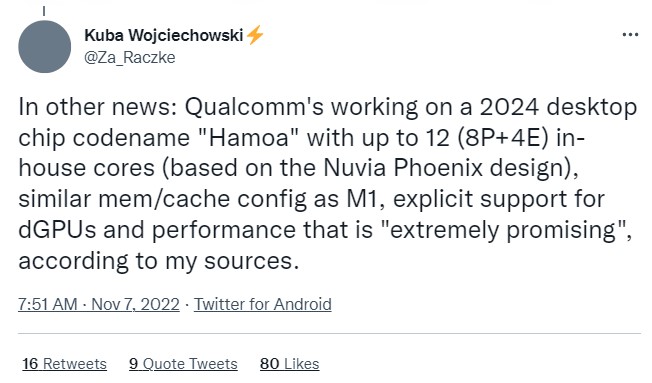

LG Display (LGD) has unveiled a new stretchable display that is highly durable. LGD claims that its stretchable or “free form” display has achieved an industry-first 20% stretchability with a resolution of 100ppi, and full-color RGB. The display is said to use micro-LEDs with a pixel pitch of less than 40μm and is capable of stretching from 12” to 14”.(Android Authority, Apple Insider, LG Display)
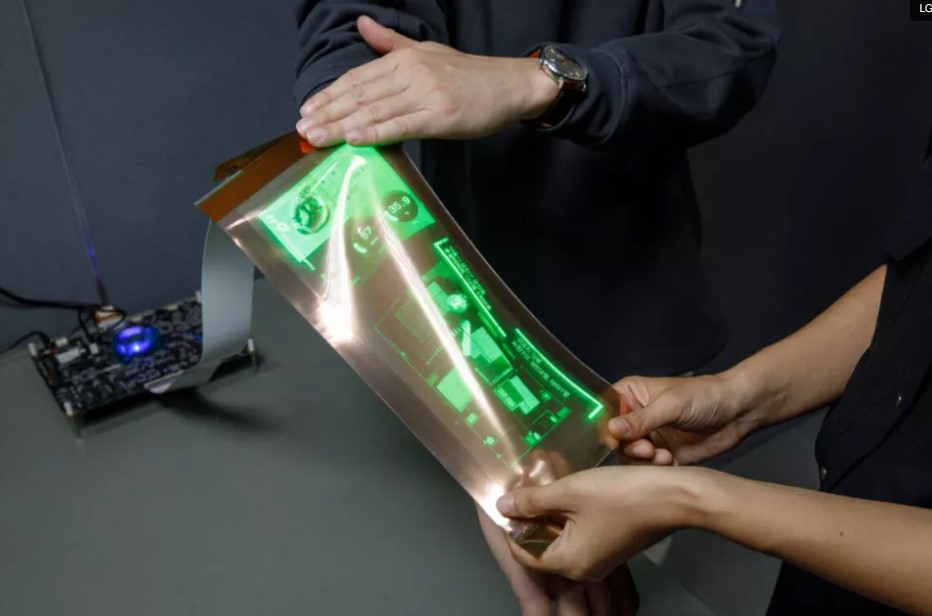
According to UBI Research CEO Yi Choong-hoon, Samsung Electronics seems not interested in slidable phones due to lukewarm marketability. He has indicated that The market for foldable phones overlaps with that for slidable phones. It will be difficult for slidable phones to create its own market. The colorless polyimide film should be used to protect the slidable display but the use can affect the surface quality. Among others, a digitizer, a key feature for wider screen phones, cannot function on it. However, he believes Samsung’s dominance in the foldable market may convince other OEMs to try and explore the possibilities of developing a commercial rollable phone — especially Chinese OEMs. (Android Authority, Korea Herald)
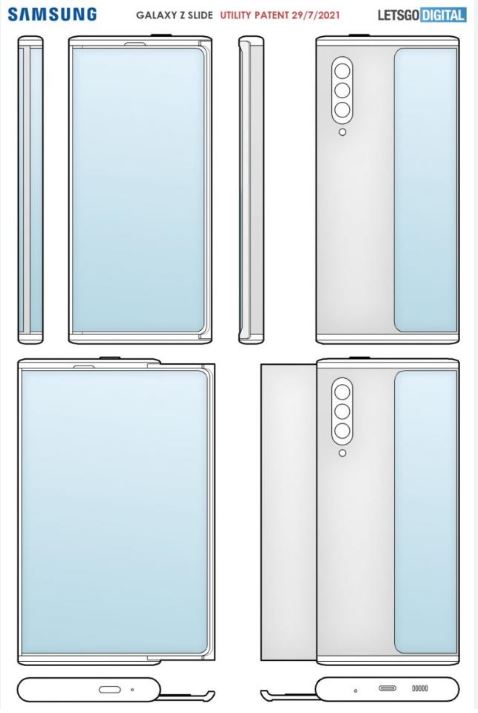
Samsung Display is reportedly considering expanding its quantum dot (QD)-OLED production capacity in order to win orders from Apple for their monitors, according to analyst firm UBI Research. The company is investing in QD-OLED production at its newly planned factory, likely to be called A5, according to the UBI Research CEO Choong Hoon Yi. A5 will manufacture panels using Gen 8.6 substrates and its main target is 27” monitors, while Apple will be the main customer. According to the UBI Research CEO, Samsung Display will likely ship QD-OLED for monitors, while it will supply two stack tandem RGB OLED panels for tablets and notebooks that have smaller screens. Samsung Display already manufactures single-stack RGB OLED panels for smartphones. While A5 will focus on QD-OLED panels, two-stack tandem RGB OLED will be made in its existing L8 line, which previously made liquid crystal display panels. (Laoyaoba, The Elec, OLED-Info)
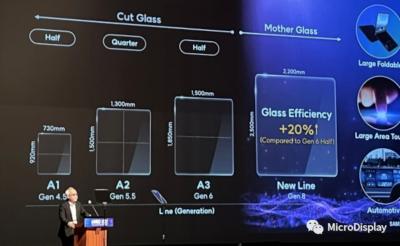

Tesla has announced that its design and specification files are available for download. The company said it is “actively working with relevant standards bodies to codify Tesla’s charging connector as a public standard”. The charging connector in all Tesla vehicles offers AC charging and up to 1 MW DC charging. Its compact design and performance is considered superior to the Combined Charging System (CCS) connectors used by most EVs in North America. Tesla claims that its charging connector and charge port — which it now calls the North American Charging Standard (NACS) — is the most common charging standard in North America.(TechCrunch, Tesla)
